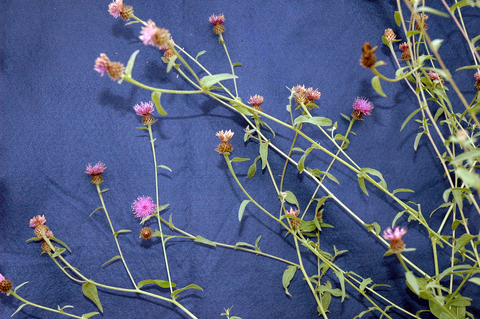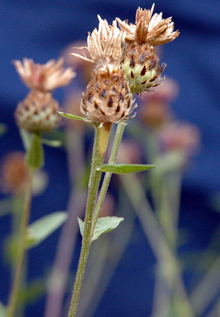Quick facts
Brown knapweed is an invasive species on the Prohibited Eradicate List. Plant must be destroyed and transportation, propagation, or sale of these plants is prohibited.
- Brown knapweed grows in disturbed sunny areas such as road ditches and woodland clearings.
- It outcompetes native vegetation by forming large monocultures.
- It can hybridize with other knapweeds, allowing for aggressive seed dispersal.
- This plant is toxic to horses.
- The Minnesota Department of Agriculture monitors this invasive species. Please report any black swallow-wort you spot at Report a Pest.
How to identify brown knapweed
- Brown knapweed (Centaurea jacea) is a perennial plant 1–4 feet tall with multiple upright stems that are reddish, ridged and may have purple stripes.
Stem
- Erect to ascending, can be both single or multiple from the base.
- Branched more in the upper part of the plant.
- Ribbed rough texture with vertical ridges on the stem and a cobweb-like appearance.
Leaves
- Alternate, green, lance-shaped leaves with waxy margins and a hairy texture.
- Leaves at the base of the plant may be stalked, lobed or toothed; they are 10" long and 1" wide.
- Leaves become smaller moving up the plant and become lance shaped.
Flowers
- Multiple small flowers clusters are 1 to 1-1/2 inch across.
- Together flower clusters form one composite flower head.
- Flowers are pink/purple in color and occasionally have a white center structure.
- Bracts are more rounded and wide at the tip, with fine fringes and a dark brown base.
- Flower heads are wide at the top.
- Blooms July to August.
Seeds
- White to light brown in color with short plumes.
Roots
- Deep, vigorous taproot.
Reviewed in 2019




